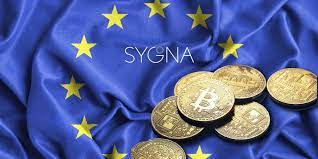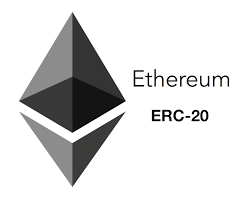Since their appearance in 2008, the cryptoassets have lacked a legal cover, which has limited their growth. This has happened not only in Europe as a whole, but also in the local countries in most of the cases. With this context, the European Union has prepared a draft of the regulation for cryptoassets in the European markets. The name of this draft is MiCA (“Markets in Crypto Assets”) and it means the answer for the growth of these products and the underlying technology. Now that this regulation is in the middle of the approval process by the European Parliament, we will see the most relevant aspects of it.
Origin of MiCA
For several years the authorities all over the world have been working in the regulation for the cryptocurrencies. Their popularity among the retail investors and the associated risks were a source of worries for them. If we add the fight against the laundry of capital and the financing of terrorism, this regulation becomes mandatory.
It happens also that several Central Banks, as an answer to the digitization of the society, are currently working in projects regarding the issue of their own CBDC. Given that the CBDC may use the same underlying technology than the cryptocurrencies, the common regulation is even more important.
In some cases as China or India, the regulation is directly forbidding all the associated services to these products. For other countries, however, the regulation allows their use cases under certain circumstances. In the European Union, for example, it currently exists a common market regulation called MiFID II. The MiCA draft has been prepared following this example, integrating the cryptoassets into the group of regulated instruments. Let’s see the main elements of this regulation.
Assets affected by the regulation
In the first place, we must know what is the scope and what are the affected assets by this regulation. MiCA defines the cryptoassets as the “digital representation of value or rights, that could be transferred or stored electronically through distributed ledgers or other technologies”. This regulation is oriented to those products not considered as financial assets, electronic money or CBDC. The products which are regulated by MiCA are those that the current regulation for financial services does not cover. Her we can find the following:

- Utility Token – this cryptoasset gives digital access for a service or product. It is issued in a DLT, and only the issuer can accept this token in exchange for any given service.
- Assets Referenced Token (ART) – this token serves as a mean of exchange. Its value links the price of one or more cryptocurrencies to the price of one local currency, or even a basket of them.
- Electronic Money Token (EMT) – similar to the previous category, the value is linked to one “fiat money” currency.
This way, some of the latest developments of the industry as the DeFi (“Decentralized Finance“) or the NFT (“Non Fungible Token“) are out of the scope of this regulation. According to the previous division, MiCA defines three different levels or legal “regimes” with different requirements for the issuance of each of the products.
Goals
The main goal of MiCA is to create a unique rulebook to provide legal certainty to the issuers and service providers. On the other side, it also tries to eliminate or, at least, ease the innovation and not become and obstacle for it. The idea is to find an equilibrium among consumers protection, market integrity and financial stability. In order to achieve these goals, MiCA focuses in the following elements:
- The issuance and admission to trading of cryptoassets, having in mind the transparency requirements and the information release for their exercise.
- The provision of services of cryptoassets by the providers of these services.
- Authorization and surveillance of cryptoassets service providers and issuers of specific tokens (ART and EMT).
- Governance of these issuers and service providers.
- Protection measures for consumers against issuance, trading, exchange and custody of cryptoassets.
- Prevention measures against market abuse and any situation affecting its integrity.
Consequently, this draft is focused not only in providing more transparency in the cryptoassets issuance, but also in regulating all the entities who provide any kind of service for these products (as the exchange platforms). However, MiCA does not only cover the cryptoassets, but also the issuers of these products. In fact, MiCA defines which activities will have the consideration of provision of services for cryptoassets:
- Custody and administration of cryptoassets in behalf of third parties.
- Trading of a exchange of cryptoassets.
- Exchange of cryptoassets for “fiat money” currencies or for other cryptoassets.
- Execution of orders for cryptoassets in behalf of third parties.
- Allocation and assesment of cryptoassets.
- Reception and transmission of cryptoassets on behalf of third parties.
This way, the regulation not only covers certain types of cryptoassets, but also the provision of services related to those cryptoassets.
Relevant aspects of MiCA
The most relevant aspects of this draft can be divided between the treatment of the service providers and the regimes of the approval for the issuance and trading of cryptoassets, which varies depending on the type of cryptoasset.

The treatment for the service providers is similar to the one for the issuers of ART. They must have a previous authorization by their National Competent Authority (CNMV in Spain) and this authorization can be cancelled. Additionally, there are certain specific requirements for the services providers. Some of them are below:
- They must act in a fair, honest and proportional way.
- They must have an insurance policy or holding guarantee funds.
- The structure of administration bodies must be competent and have a good reputation.
- When this structure is modified, a notice should be published.
- There should be a procedure of dispute management.
- There should be a limited subcontracting regime.
Apart from these obligations, MiCA defines three different regimes of authorization for cryptoassets issuers. These regimes have three different levels of severity depending on the similarity of the cryptoasset with the electronic money, and they are as follows:
Light regime for assets not in EMT or ART
This regime is the least severe of the three, because it regulates cryptoassets which do not compromise the financial stability. In fact, it does not require an authorization, but just a notification to the national supervisor.
The procedure of notification refers to the publication of a white paper, which should include a minimum information. This information is related to the issuer, the project, the characteristics of the issuance and the risks that the potential investor may assume. Furthermore, the white paper should include information about the technology used, as well as the obligations and rights linked to the cryptoassets. This white paper should be published and notified to the National Competent Authority.
Additionally, the regime defines a right of dismissal for the subscriber, which should be valid for 14 days from the subscription date. This right is only valid when the subscription is intermediated by the issuer or by a designated third party. This means that any resale in which the issuer is not participating will not generate any dismissal right for the subscriber.
Last but not least, MiCA defines a procedure of issuer responsibility for those cases in which the information provided in the white paper does not fulfill the requirements or the information has been probed as erroneous or incomplete.
Regular regime for ART issues
This regime is more severe than the previous one, so the amount of information that must be included in the white paper is higher. In this case, the white paper must be approved by the national authority where the issuer is registered. This authorization will be enough to issue in the whole European Union, which is known as the “one stop shop” principle. Moreover, the regime defines several conditions by which the authorization could be revoked or even rejected.
Additionally, it defines several obligations for the issuers. On one side, the need of having backup funds for the issued assets, so they can maintain their value. On the other side, it requires the existence of a claims procedure which must be free to use, effective, and it must registers and stores its activity.
Severe Regime for EMT issues
This regime is the most severe, because it considers that the EMT are quite similar to the fiat money currencies. The authorization of the issuer is limited in this case to electronic money entities or credit entities. This is a clear limitation for the number of issuers of these cryptoassets.
Both the obligations for the issuer and the responsibility regime are very similar to the previous regime. The difference is what MiCA calls the “preferential right” which appears only in this regime. This right allows the subscriber to swap the EMT in exchange for the nominal value of the reference currency in the refund moment.
Next steps
This draft for MiCA is currently in the middle of the approval phase by the European authorities. It is expected to be effective in 2024, but it could suffer modifications until then. In fact, the European Parliament, the European Commission and the European Council are currently arguing for possible changes.
This post shows only a very generic vision of the main elements of the draft. However, we can see how the regulation looks for transparency for entities, as well as defining the assets under scope. This allows greater clarity, and defines a common legal environment so the cryptoassets market works with guarantees. In some years from now, the regulation will benefit the final investors when minimizing the fraud situations with this assets.
Therefore, this first draft is already a good first move for the cryptoassets industry in the European Union. We cannot provide a real analysis on the impact, but at the moment it has been well received. It is also true that not always a higher regulation brings benefit to the industry, but this does not seem the case. The starting point was the absence of regulation, so we have reasons to believe that this is a good step. In the future, if the regulation does not become an obstacle, industry and investors should feel grateful for this draft.



